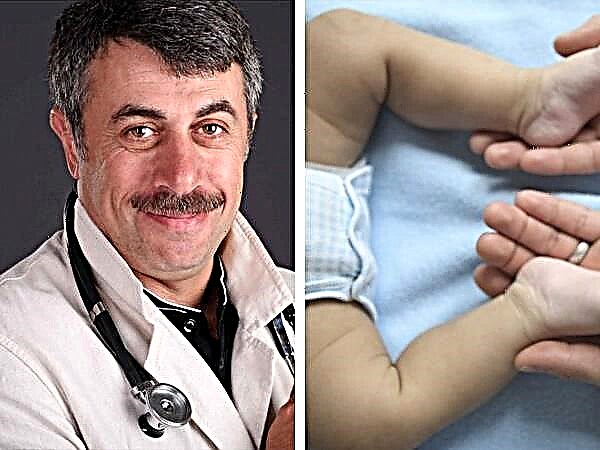
Constipation in childhood is a fairly common occurrence. In most cases, it is of a physiological nature, not dangerous to the life and health of the baby. But sometimes difficulties with bowel emptying are caused by pathologies of the structure of the intestine itself, as, for example, with dolichosigma.
What it is?
Dolichosigma is called abnormal structure of the sigmoid part of the large intestine. This section may be longer than the norm with an unchanged diameter, and the wall thickness of this section may be greater than required for its normal operation. If the intestine is lengthened, then it is often more mobile than required, therefore, the passage of feces through it is accompanied by gross violations. According to pediatricians, the disease is found in about 40% of children who suffer from systematic (chronic) constipation.
The lengthening of the sigmoid intestine in a child may be a congenital anomaly, formed during the period of intrauterine development of the fetus, or it may be an acquired pathology, and the second occurs much more often in the elderly, while in children, congenital anomalies come out on top. Congenital forms are noticeable in infants already in the first month of life. The normal length of the intestine in infants is up to 20 centimeters. In a year - 30 centimeters. In children of the first and second year of life with a diagnosis of dolichosigma, an elongation of up to 47 centimeters is found.

Causes
If we talk about the congenital form, then science and medicine today are not very clear about the true reasons why a baby forms two or three additional intestinal loops. It is believed that malnutrition of the expectant mother, metabolic disorders, genetic abnormalities, heredity and infectious diseases of the expectant mother, as well as her bad habits during the period of gestation, can be affected, but no one can name the exact root cause. The acquired form is better studied by specialists, its diagnosis and justification are beyond doubt.
The lengthening of the sigmoid colon develops as a result of digestive disorders, in which fecal matter in the large intestine undergoes fermentation and decay processes for a long time. All this happens with prolonged constipation. At risk, children who lead a sedentary lifestyle sit more than run. And also at risk of getting sick children who abuse meat and carbohydrates, and also often worry and get nervous. Some researchers are confident that dolichosigma is always a congenital problem, just when the negative factors coincide, the disease manifests, but under normal conditions it does not.
Until now, experts cannot come to a consensus on whether to consider dolichosigma a disease or not. In about 15% of perfectly healthy children, lengthening of the sigmoid region is found during examination of the intestines, but at the same time they have no problems either with defecation in particular, or with the state of health in general. And this gives reason to believe that dolichosigma can be a variant of the norm, an individual trait. This opinion, in particular, is shared by the well-known children's doctor Yevgeny Komarovsky.
Other experts are sure that dolichosigma itself creates a favorable background for the formation of structural disorders that can lead to inflammatory processes, intestinal spasm, excessive proliferation of muscle fibers, dystrophy of the mucous membranes of the colon.

Stages
There are three successive stages of the disease, which are simultaneously considered forms of the disease. They determine how to treat the problem - as a variant of the norm or as a disease that needs to be treated.
- Compensated - in general, the lengthening of the sigmoid colon in the child's body is fully compensated. Constipation occurs, but not often and lasts no more than three days, while the stomach hurts, there is bloating. The condition is easily corrected by normal nutrition, and in extreme cases by taking mild laxatives. The child's condition and well-being are not disturbed; after a bowel movement, relief comes.
- Subcompensated - the body cannot fully compensate for the changes, therefore, the child's constipation is constant, systematic, abdominal pain and bloating occur not only with constipation, but also in the intervals between them. Mild laxatives are of little help, but an enema is still effective. It is she who helps cleanse the intestines from the accumulation of feces.
- Decompensated - there is no compensation at all. This is the most difficult and severe form in which the child cannot empty the intestines for 7-10 days, and abdominal pains are present to one degree or another almost constantly. The general condition begins to suffer - the baby suffers from a lack of appetite, he is often nauseous, the formation of pustules is often observed on the skin. In a severe case, intestinal obstruction develops. To alleviate the condition, siphon enemas are used - this is the only way to help the child remove feces.

Symptoms and signs
Symptoms are mainly due to the fact that the accumulation of feces in the intestines has a toxic effect on the body. The longer the constipation, the stronger the signs of intoxication. The main symptom of dolichosigma is constipation, which persists, no matter what the parents do. Most often, such constipation in congenital or acquired form is found in children aged from six months to a year. Provokes the start of the disease, according to pediatricians, introduction of complementary foods. The amount of feces increases, and not always with a congenital predisposition, the intestines can cope with them.
In about a third of children, dolichosigma is detected in the age range of 3–6 years. And at first, parents usually do not see anything wrong with a child not going to the toilet for 2-3 days. The problem is paid attention when the duration of constipation increases. The feces of a child with dolichosigma are denser, compressed, outwardly resembling a large elongated spruce cone with an extremely unpleasant odor. If the disease leads to damage to the intestinal mucosa, then blood impurities are not excluded in the feces.
Abdominal pain is mainly observed in the left iliac region and around the navel. The abdomen is often distended. After a hearty dinner or lunch, the child's pain and bloating increase, and after a successful bowel movement, the pain decreases, but not for long.
Formation of fecal stones, which severely injure the intestines, is considered a serious complication. Against the background of dolichosigma, anemia often develops.

Diagnostics
A specialist who may suspect a pathology is pediatrician. It is to him that you need to turn to if the child often suffers from constipation. As a rule, the doctor reveals a low body mass index, a slight lag in physical development, pallor of the child's skin. When examining the abdomen with fingers, the intestinal loops overflowing with contents are almost clearly felt. The finger method of examining the anus shows that the rectum is empty, despite the fact that the child has not gone to the toilet for a long time.
But all this is not enough to establish an appropriate diagnosis. An instrumental examination is needed. This is an irrigography, which allows you to understand exactly whether the intestine is lengthened, what shape its loops have. To assess the transport capacity of the intestine, an x-ray with barium is performed. Endoscopy, colonoscopy, and abdominal ultrasound may be recommended. An analysis of feces for worm eggs is mandatory. Additionally, it is advisable to consult with a pediatric surgeon and a gastroenterologist.

Treatment
Whatever the stage of the disease identified, they begin to treat the child with the help of complex conservative therapy. Primarily it is important to normalize food in such a way that digestion is more delicate. The diet does not imply the presence in the patient's menu of such foods as fast food, carbonated drinks, carbohydrate foods, sweets, pastries, an abundance of meat and tough foods.
Foods that stimulate the intestinal wall for more efficient peristalsis high in plant fiber - fresh vegetables, whole grain breads, bran, fruits, herbs and berries. The child needs fermented milk products - kefir, fermented baked milk, cottage cheese. The diet must be introduced vegetable oils. It is important to drink more fluids - fruit drink, tea, homemade compote.
Laxatives and enemas are recommended only as a last resort, since it is very important for dolichosigma that the child begins to develop an independent spontaneous reflex, which prompts him to defecate. In addition to the diet, it is strongly recommended to reconsider the lifestyle - move more, replace sedentary activities with active games on the street, sports, walking, cycling.
If a child complains of abdominal cramps and pains, the doctor can individually prescribe antispasmodic drugs, and if the intestines are inactive, relaxed, then massage the anterior abdominal wall, physiotherapy, exercise therapy, which the child will be engaged in under the supervision of an experienced specialist doctor. For children with dolichosigma, courses of taking vitamins of group B are considered very useful. Some doctors additionally recommend taking probiotics and prebiotics, although modern clinical guidelines for biotics are not so optimistic - experts have come to the conclusion that there is no distinct effect from their use. However, no harm was found from them either, so if desired, you can drink probiotics without fear.


In some cases only surgery can help a child... Surgical treatment is recommended in cases of intestinal obstruction, the absence of any positive effect from all of the above measures of conservative therapy, with the progression of poisoning of the body with poisonous components of stagnant feces. And also the operation is recommended for complex loops, bowel bend. The operation is pretty straightforward. It consists in resection of the sigmoid region. The excess, creating an elongation, is cut off and sutured with the distal section.
The forecasts are quite favorable. In most cases, it does not reach the operation, it is possible to cope with dolichosigma by following a diet, adequate physical activity and visiting a physiotherapy room. This makes it possible to achieve a stable remission, and gradually, as they grow older and grow, the problem itself is successfully solved. Only in isolated cases, according to doctors and patients, the problem spreads to adulthood. If dolichosigma has not passed until the middle of adolescence, the person is shown lifelong adherence to proper nutrition. It is important to live in a way that avoids constipation.
Important! After the operation, if there were indications for it, dolichosigma does not recur and does not return if the patient follows the dietary rules and leads an active and healthy lifestyle.




